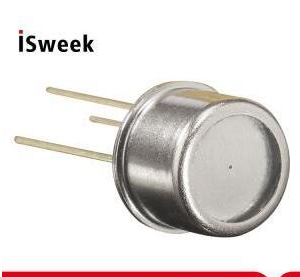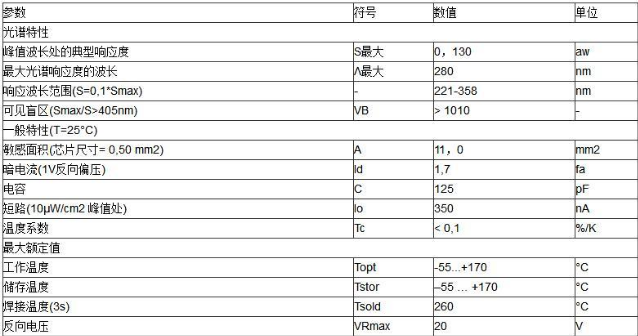Ultraviolet flame monitor is mainly used for flame monitoring in gas and fuel industry. The monitor is only sensitive to ultraviolet rays that generate sparks, arcs, coronas, flames, etc., and has no reaction to high temperature radiation of lamps and furnaces, and has strong anti-interference. . The ignition device is controlled to automatically ignite, and the fuel valve is automatically opened at the same time, and there is no ignition or sparking, arcing, corona, etc. within the set time. The ultraviolet detector senses the fluctuation of the ultraviolet rays, and the controller automatically closes the fuel valve and alarms. If the ignition is successful, the fuel is normally supplied. If it cannot be monitored in real time, an explosion or the like may occur.
Electric spark is a form of electric arc and is an electronic component. The spark that strikes is not an arc, it is Mars, it is a particle of matter that is hit by high temperatures. The two are essentially different. A certain voltage, when he puts the air between the electrodes, the vacuum or the material ionization, is released in the form of a spark. The stone and the stone rub against each other to generate energy, which is discharged into an electric spark. High voltage breakdown insulation The high voltage of the material is generally caused by electromagnetic induction. It may be caused by friction when the energy is generated. The excess energy generates high temperature and is released in the form of light and heat.
An electric arc is a phenomenon of gas discharge, a momentary spark generated by current passing through certain insulating media. An electric arc is a self-contained gas that conducts electricity, and most of its carriers are electrons generated by one electron emission. The metal surface of the contact causes electrons to escape due to one electron emission, and gas atoms or molecules in the gap generate electrons and ions due to ionization. In addition, electron or ion bombardment of the emitting surface in turn causes secondary electron emission. When the ion concentration in the gap is sufficiently large, the gap is electrically broken down to cause an arc.
Corona refers to the phenomenon of partial discharge of a charged body surface in a gas or liquid medium. It often occurs around the high-voltage wire and near the tip of the charged body, and can generate ozone, nitrogen oxide and the like. On substations and lines above 110kV, light layers similar to those of solar flares often appear, giving out the sound of “嗤嗤†and “陛哩â€. Corona can consume electrical energy and interfere with radio waves. Corona is an electron collapse characteristic of a very inhomogeneous electric field - a stable discharge in the form of a stream.
Therefore, in many industrial inspections, UV detectors capable of accurately detecting sparks, arcs and coronas are indispensable, and many industrial safety protectors can issue alarms at the first time of problems. Next, the company will give you two high-end UV detectors that are used in industrial testing.
Germany SGLUX UV Photodetector-TOCON_ABC1

SiC-based broadband UV photodetector with integrated amplifier TOCON is a 5 volt powered UV photodetector with an integrated amplifier that converts UV radiation into a 0~5V voltage output. The TOCON output voltage pin can be connected directly to the controller, voltmeter or other data analysis device with voltage input. Highly modern electronic components and a sealed metal enclosure with UV glass windows eliminate noise or electromagnetic interference from parasitic resistance paths within the package. TOCON is the perfect solution for industrial UV sensing applications, from flame detection at pW/cm2 levels to UV curing lamp control at W/cm2 levels. Ten different TOCONs cover these 13 orders of magnitude, and their sensitivity varies. TOCONs is produced for UV broadband sensors or with filters for selective measurement. Mainly used in the field of ultraviolet radiation and flame detection.
UV Photodetector TOCON_ABC1 Features:
SiC-based broadband UV photodetector in the TO5 housing with concentrator lens cap
0...5 V voltage output
The peak wavelength is 280 nm
The maximum radiation (saturation limit) at the peak is 18 nW/cm2.
The minimum radiation (resolution limit) is 1,8 pW/cm2
Germany SGLUX UV Photodiode - SG01D–5LENS

SiC has unique properties, can withstand high-intensity radiation, is almost insensitive to visible light, produces low dark current, fast response and low noise. These properties make SiC the best material for use in visible dead zone semiconductor UV detectors. SiC detectors can operate at temperatures up to 170 ° C (338 ° F). The temperature coefficient of the signal (response rate) is also very low, < 0, 1% / K. Due to low noise (fA level dark current), extremely low UV radiation intensity can be effectively detected.
SiC photodiodes are available in seven different effective sensitive areas, from 0.06 mm2 to 36 mm2. The standard version is the broadband UVA-UVB-UVC. Four filtered versions result in a tighter sensitization range. All photodiodes have a sealed metal housing (TO type), a 5.5mm diameter TO18 housing or a 9.2mm TO5 housing. Further options are 2 pins (1 insulation, 1 ground) or 3 pins (2 insulation, 1 ground).
Germany SGLUX UV photodiode SG01D–5LENS features:
Broadband UVA+UVB+UVC, PTB reported high stability for flame detection
Radiation sensitive area A = 11,0mm2
TO5 sealed metal case and condenser, 1 insulated pin and 1 ground pin
10μW/cm2 peak radiation yields approximately 350 nA
Germany SGLUX UV photodiode SG01D–5LENS parameters:

RF Coaxial Connector,RF QMA Connector,RF FME Coaxial Cable Connector,Wire Solder Type RF Connectors
Xi'an KNT Scien-tech Co., Ltd , https://www.honorconnector.com